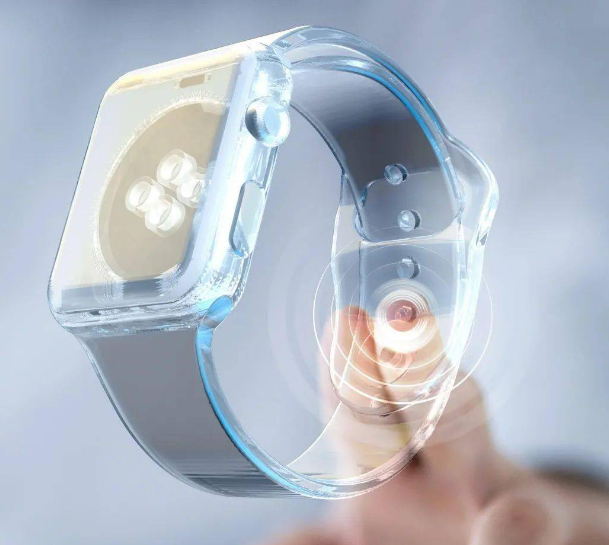According to data from market research institutions, the global wearable device market size has exceeded US$50 billion in 2022 and is expected to reach US$70 billion by 2026. At the same time, the market size of boost chips is also expanding. Take smart watches as an example. According to data from Counterpoint Research, the smart watch market size will exceed US$15 billion in 2022. As one of the key components in smart watches, the market size of boost chips is also expanding. However, due to the limited size and battery capacity of wearable devices, how to improve their battery life and how to reduce power consumption have become urgent issues to be solved. As a chip that can increase or decrease the voltage, the boost chip has wide application prospects in wearable devices. This article will discuss the application and optimization of boost chips in wearable devices.

Principle and application of boost chip
The basic principle of the boost chip is to use the low resistance of the switching device (such as MOSFET or BJT) in the switching state. By controlling the on-off state of the switching device in the circuit, the input low voltage is raised or lowered to a level suitable for the operation of the equipment. voltage. The application of boost chips in wearable devices mainly includes the following aspects:
1. Boost drive circuit
In wearable devices, many circuit modules require stable voltage to function properly. For example, screens, processors, sensors, etc. all require boost chips to provide stable voltage. The boost chip can increase the low voltage output by the battery to a voltage suitable for the operation of these circuit modules to ensure the normal operation of the equipment.
2. Inverter
An inverter is a circuit that converts direct current into alternating current. In wearable devices, the inverter can convert the DC power output by the battery into AC power to drive some devices that require AC power, such as speakers, vibrators, etc. A boost chip can be used as part of an inverter to boost the low voltage output from the battery to a voltage suitable for driving these devices.
3. Wireless charging
Wireless charging technology is a technology that uses magnetic fields to transmit electrical energy from the transmitter to the receiver. In wearable devices, wireless charging requires increasing the low voltage output by the battery to a voltage suitable for wireless charging. The boost chip can accomplish this task and improve the efficiency of wireless charging.
The Importance of Boost Chip Optimization
Due to the limited size and battery capacity of wearable devices, reducing the power consumption of the device is crucial to improving the device's endurance and user experience. Therefore, the optimization of boost chips has also become very important. Here are some ways to boost chip optimization:
1. Improve conversion efficiency
Conversion efficiency is an important indicator of boost chips. Improving conversion efficiency can reduce power consumption and improve the battery life of the device. Conversion efficiency can be improved by selecting high-performance switching devices, optimizing circuit design, and reducing the on-resistance of switching devices.
2. Reduce output voltage fluctuations
Output voltage fluctuations will cause the device to operate unstable and increase power consumption. Output voltage fluctuations can be reduced by selecting high-performance magnetic components and optimizing control algorithms.
3. Reduce chip size
Since the size of wearable devices is limited, reducing the size of the boost chip can reduce the overall size and power consumption of the device. The chip size can be reduced by selecting high-performance switching devices, optimizing circuit design, and adopting integrated packaging.
case analysis
Take smart watches as an example. Smart watches require a variety of circuit modules to work together to achieve their functions, such as screens, processors, GPS, Bluetooth, etc. These circuit modules require different voltages to work properly, and smart watches have limited battery capacity, so a boost chip is needed to provide a stable voltage. At the same time, due to the small size of smart watches, the volume and power consumption requirements for the boost chip are also relatively high.
In this case, an efficient boost driver chip can be used to achieve the normal operation of various circuit modules. This boost driver chip adopts advanced switching devices and optimized circuit structure, and has the characteristics of high conversion efficiency and low output voltage fluctuation. At the same time, the boost driver chip adopts a small package design, which can meet the size and power consumption requirements of smart watches. By using this boost driver chip, smart watches can achieve longer battery life and better user experience.
Summarize
As a chip that can increase or decrease the voltage, the boost chip has wide application prospects in wearable devices. This article introduces the principles and applications of boost chips, the importance of optimization, and case studies. By improving conversion efficiency, reducing output voltage fluctuations, and reducing chip size, the performance of the boost chip can be optimized and the battery life and user experience of wearable devices can be improved. With the continuous development of wearable devices, the application prospects of boost chips will become increasingly broad.

